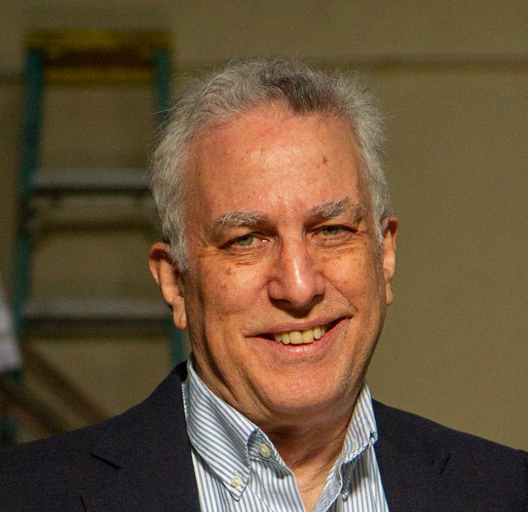When Acclaimed Leaders Fail: What Transitions Reveal About Systems
Some leaders fail not because they lack talent, but because they misunderstand the terrain. Leadership isn’t a fixed trait; it’s a dynamic set of capabilities — strategic thinking, communication, cultural fluency, operational insight — expressed differently depending on the environment.
In my consulting work, I help executives and organizations realign strategy with the invisible systems that actually drive performance. One recurring pattern? Respected leaders stumble when they assume that what worked in one context will work in another.
Let me show you what I mean.
George Fisher: Motorola to Kodak
George Fisher led Motorola through a golden age as CEO from 1988 to 1992. The company surged in both profitability and prestige under his leadership. In 1993, he was recruited to Eastman Kodak, then the crown jewel of American photography.
But Fisher’s success didn’t translate. Kodak’s core business — built on film, photochemicals, and mechanical cameras — faced structural headwinds. The company’s legacy infrastructure was vast, its systems complex and opaque. Well-meaning employees made decisions in silos, often unaware of broader implications. Senior leaders, insulated by layers of hierarchy, struggled to see the real picture.
It’s possible Fisher assumed the systems he inherited at Kodak would function like the ones he left behind — and that assumption may have clouded his understanding of what was really happening. The culture and systems were deeply misaligned with the new strategic needs.
Fisher didn’t fail because he wasn’t capable. He failed because he couldn’t transplant his success formula into a fundamentally different system. Kodak had hoped he would bring the same spark he brought to Motorola, but the magic didn’t carry over. In hindsight, he may have taken the inherited systems too much at face value. Kodak’s eventual unraveling came years later — driven more by seismic technological shifts than any single leader’s choices.
Ron Johnson: Apple Store to JCPenney
Ron Johnson was hailed as a marketing visionary after creating Apple’s iconic stores — sleek, high-touch, high-revenue environments that became the most profitable per square foot in the industry. In 2011, he left Apple to become CEO of JCPenney.
He acted boldly — eliminating coupons, revamping merchandise, firing large swaths of senior staff, and trying to reposition the brand.
Customers revolted. Sales collapsed. He was fired in under two years.
At Apple, Johnson had a blank slate, a premium brand, a loyal customer base, and a visionary founder. At JCPenney, he inherited a legacy retailer with long-term customers, entrenched practices, and fragile margins. Johnson tried to impose innovation without learning the landscape. He mistook authority for understanding.
What works in one system can fail catastrophically in another.
Bob Nardelli: GE to Home Depot
Bob Nardelli was a star at GE, known for operational discipline and Six Sigma precision. In 2000, he was tapped to run Home Depot, despite having no retail experience.
He brought GE’s playbook: centralization, cost-cutting, top-down control. Profits improved, but customer service — Home Depot’s cornerstone — deteriorated. Morale plunged. Store employees felt disempowered. The company’s culture eroded, and so did investor confidence.
Nardelli exited in 2007 with a massive payout, but left behind an organization that had lost touch with its identity.
GE was a machine. Home Depot was a living, breathing network of customer-facing teams. Systems matter.
(As a sidebar: another GE alum, Jim McNerney, became CEO of Boeing. Some argue that the cost-focused, finance-first approach he brought with him contributed to the cultural shifts and decision-making patterns that ultimately played a role in Boeing’s catastrophic missteps decades later.)
Why do smart, capable leaders stumble so badly in new roles?
One explanation lies in the psychology of skill development. There’s a well-known model that describes how we learn:
Unconscious incompetence – We don’t know what we don’t know.
Conscious incompetence – We begin to recognize the gaps in our knowledge.
Conscious competence – We know what to do, but it takes effort and focus.
Unconscious competence – Our skills become second nature and intuitive.
Contextual reset (unofficial, but very real) – Our intuition no longer fits the environment, but we trust it anyway.
Leaders like Johnson and Nardelli had reached unconscious competence in their previous roles — their instincts were finely tuned to those environments. But once the context changed, they were back at stage one: unaware of how much they didn’t know. Worse, their past success gave them confidence, which made them less likely to slow down, listen, and recalibrate. They weren't just making mistakes — they were making them with conviction.
Competence is domain-specific. False confidence in a new environment doesn’t just lead to poor decisions — it’s a form of renewed incompetence, wrapped in the illusion of mastery.
So What’s the Pattern?
Each of these leaders had been successful — even celebrated — in prior roles. But they failed when they underestimated how much success depends on context: the systems, incentives, expectations, and informal structures that shape behavior.
In short: they brought a playbook into a game they hadn’t studied.
If you inherit a system and assume it works like the one you left — in accuracy, in cadence, in intent — you're flying blind. The numbers may be familiar in format but alien in meaning. The levers may be labeled the same, but they move different machinery. And sometimes, those levers aren’t connected to anything at all — legacy systems can create the illusion of control while quietly drifting off course.
The Takeaway for Executives
When entering a new role, especially in a legacy organization, resist the urge to change everything at once. Learn the local logic. Listen for what the numbers won’t tell you. Run pilot tests before scaling big shifts. Honor what’s already working before trying to rebuild.
Success depends on humility, curiosity, and systemic awareness.
I Can Help
I help leaders see what’s under the surface — the systems that make or break strategy. If you're stepping into a new leadership role or advising someone who is, let’s talk about how to make your transition stick.

